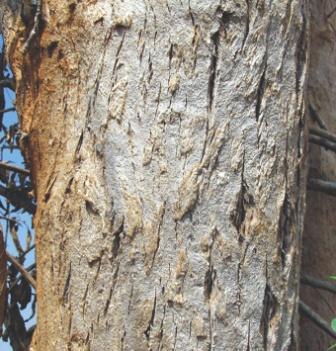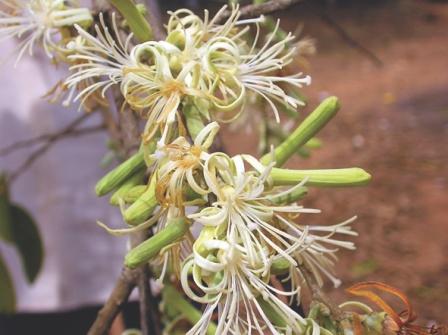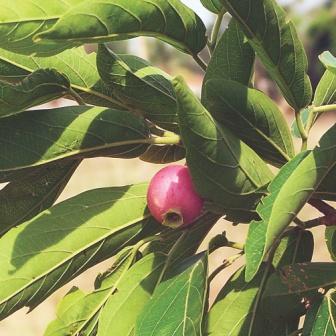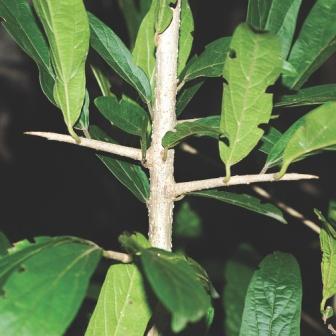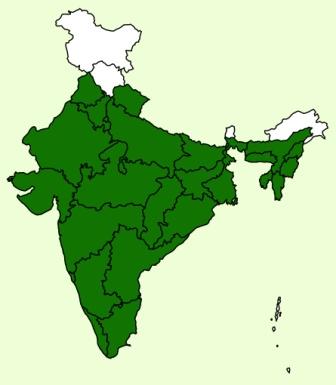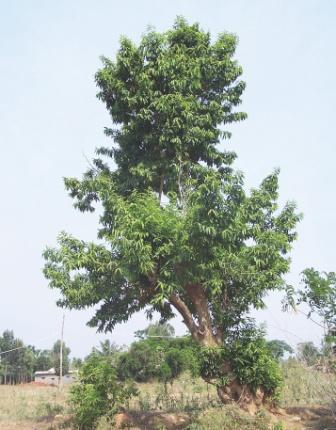Natural Regeneration :
- Naturally regenerated by seeds.
Artificial Regeneration :
- propagated by nursery raised seeds.
Seed collection and Storage :
- Seeds are collected from June to August.
- Fresh Fruits on collection should be depulped and shade dried.
- Seeds are stored in gunny bags.
- Seed has less viability.
Seed Treatment :
- Cold water treatment for 24 hours.
Nursery Technique :
- Seeds are directly dibbled into polybags with soil, sand and FYM in the ratio of 1:1:1 or 2:1:1.
- Soil with high clay content should be avoided.
- Fresh seeds should be graded and large size seeds are sown in polybags at the rate of two seeds per bag.
- Two leaf stage seedlings are transplanted into polybags.
Plantation technique :
- In dry localities pits of 45 cm3 and in moist locality pits of 30 cm3 are dug for planting.
- Seedling of 6 -12 month old is out planted into the above pits during the rainy season.
Irrigation :
For proper growth and survival it is necessary to give one or two watering after planting. This is specifically required in arid regions. Irrigation after planting is not a prerequisite in areas having sufficient soil moisture and precipitation.
Yield :
Major uses :
- In India the wood is valued for musical instruments and furniture.
- It is used in building as beams, for flooring, furniture, cabinet work, inlaying, carving, bobbins, spindles, shuttles, rice pestles, tool handles, walking sticks, gunstocks and handicraft articles in Asia.
- It is also used by traditional healers in the treatment of skin cancers by means of local application of the root.
- The twigs are used for brushing the teeth in India.
Other uses :
The brown wood is close grained and heavy. Its density varies widely from 440 - 1,100 kg/m³ at 15% moisture. It air dries well without checking, works well, bends easily and takes a good finish. It is not durable and should not be used for exterior purposes, especially when in contact with the ground. The wood is valued for musical instruments and furniture in India; it is used in construction for beams and flooring; cabinet work, inlaying, carving, bobbins, spindles, pestles, oil mills, shuttles, rice pestles, tool handles, walking sticks, gunstocks and handicraft article. The stems are traditionally used for making spears in Kenya.
Carbon stock :
0.03 tonC/tree


